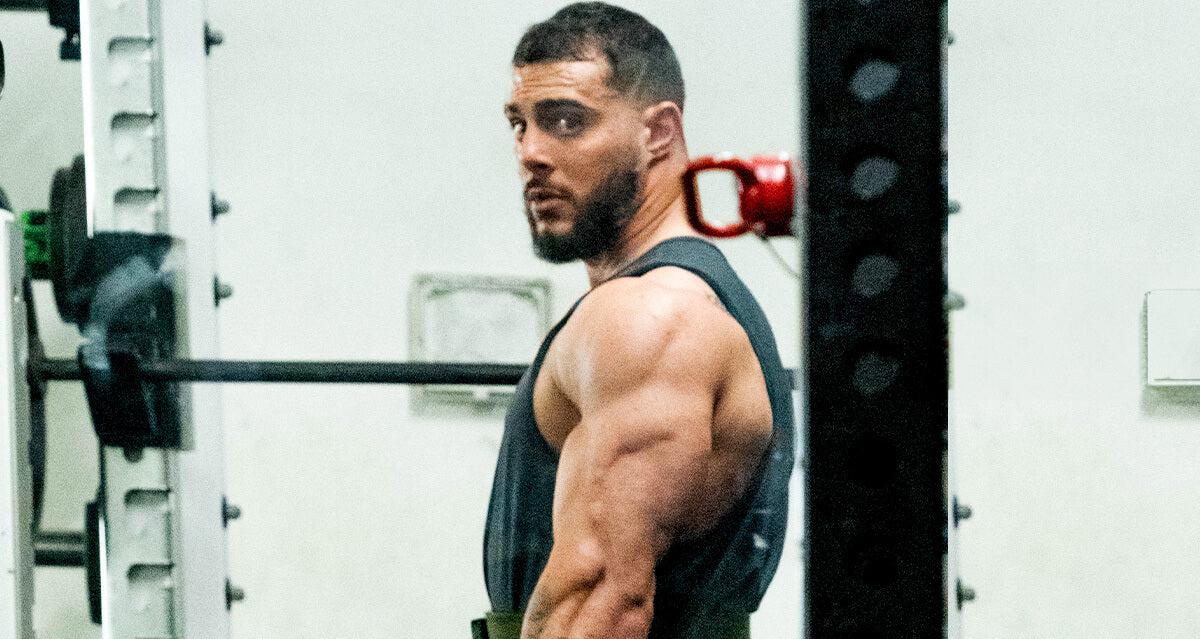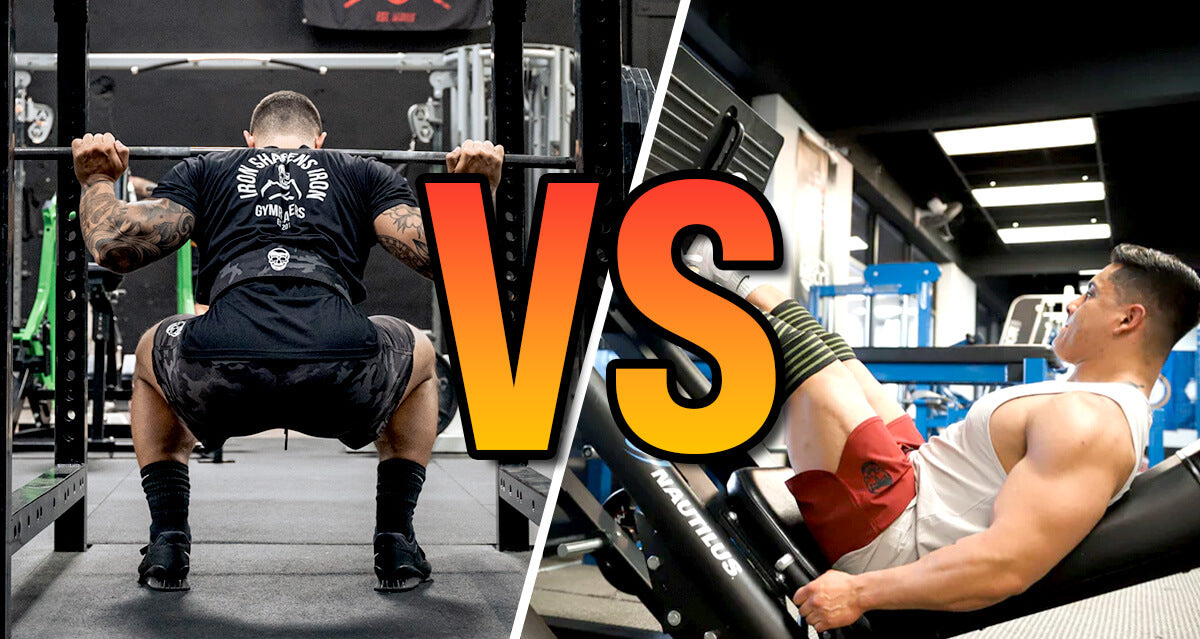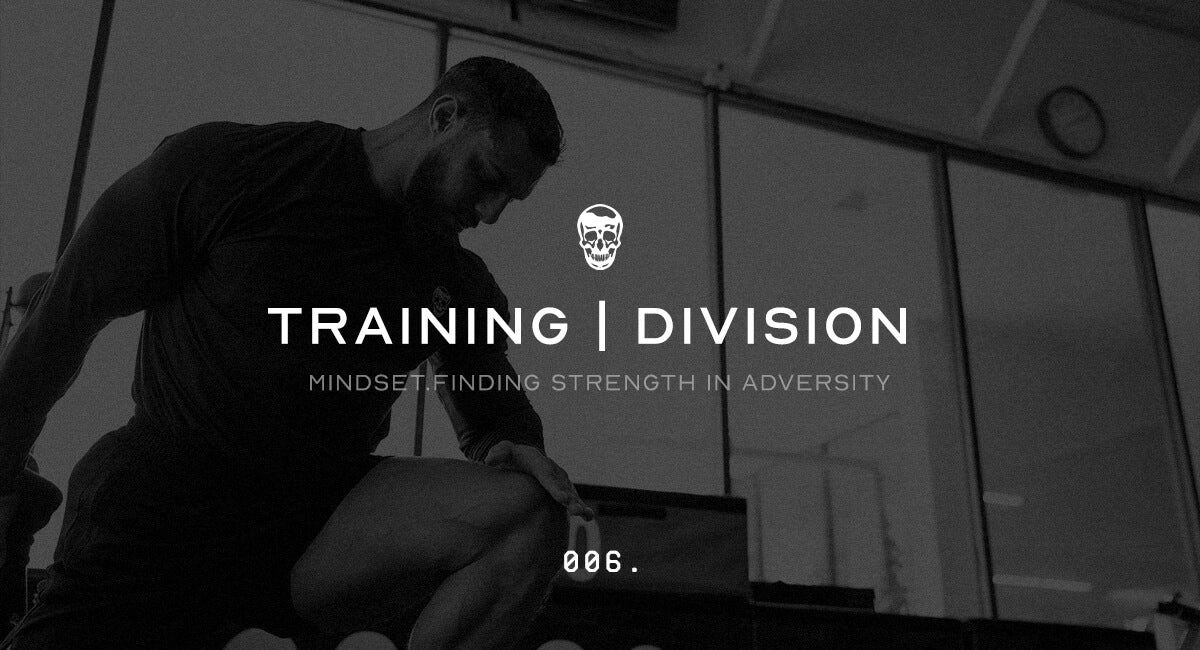Developing the lateral tricep head contributes to the muscle’s ‘horseshoe’ appearance, making it look thicker and wider.
I’ll teach you which movements target the lateral head, what mistakes to avoid, and which strategies to implement to maximize growth.
Key Takeaways
- The lateral tricep head is the outermost portion of the muscle. When developed, it adds significant bulk to the back of the upper arm, making it appear wider and more aesthetic.
- Some of the best lateral tricep head exercises include rope and straight bar pushdowns, JM press, tricep kickbacks, bench dips, reverse-grip cable extensions, and diamond push-ups.
- For best results, train the lateral head twice weekly with one movement per workout for three or four sets. Train in various rep ranges (6-10 reps on compound lifts like the JM press and 12-15+ on isolation activities like cable extensions) and maintain a consistent tempo.
Anatomy of The Triceps
The triceps brachii is a three-headed muscle that makes up the back of the upper arms. Two of its heads (the medial and lateral) originate from the humerus (upper arm bone) and are inserted into the elbow.
The third (long) head originates from the scapula, crosses the shoulder, and also inserts into the elbow.
Together, the three heads produce elbow extension or straightening of the arm and are essential in many push exercises, such as push-ups, bench presses, and shoulder presses.
The lateral head is the outermost tricep head, mainly responsible for the muscle's ‘horseshoe’ shape.
Though many people consider the long head of the tricep to be the primary player because of its overall size, resources suggest that the lateral head is strongest and contributes the most in activities that require a lot of strength and power.
The lateral head appears to be most active in pushdown activities where the elbows are positioned to the sides of the torso with the palms facing down. However, reverse-grip exercises (palms facing up) also engage the lateral head.
Best Exercises To Target The Lateral Head
The seven best exercises for the lateral head are:
1. Tricep Rope Pushdown
This exercise is a classic tricep builder performed using a cable machine with a rope attachment and a moderate amount of weight.
How To:
- Grab both ends of the rope, step back, position your elbows to your sides, and bring your shoulders back.
- Take a breath and slowly extend your arms, spreading the rope at the bottom.
- Pause briefly and bend your arms until your wrists are slightly higher than your elbows.
Pro Tip:
Rotate your wrists out and spread the rope at the bottom of the movement to further emphasize the lateral head.
The Gymreapers Tricep Rope attaches to any cable machine and offers multiple grip options for better triceps targeting. Its 27-inch length ensures you can really focus on your triceps with every rep.
2. Tricep Straight Bar Pushdown
The straight bar pushdown is another classic movement. Because of its greater stability, using a straight (or V) bar instead of a rope allows you to use more weight.
How To:
- Grab the straight bar with palms facing down, step back, and position your elbows to your sides.
- Puff your chest up, inhale, and fully extend your arms.
- Pause briefly and bend your arms until your wrists are slightly higher than your elbows.
Pro Tip:
Experiment with your elbow position to see what feels best. Dr. Mike Israetel recommends three positions: 1) elbows strictly locked at your sides, 2) elbows moving slightly forward and up as your arms bend, and 3) elbows moving slightly back, turning the tricep extension into more of a pushdown.
3. JM Press
The JM press is a cross between a tricep skullcrusher and a close-grip bench press.
How To:
- Lie on a flat gym bench, reach up, and grab the bar with an even, overhand grip; your hands should be roughly shoulder-width apart.
- Pull your shoulders back, take a breath, and unrack the bar.
- Position the bar over your upper chest.
- Take another breath and slowly lower the bar to your chin and neck.
- Pause briefly and push the bar back to the top position as you breathe out.
Pro Tip:
Performing the JM press on a Smith machine allows for more stability and may lead to better tricep activation. Give it a try and see what feels better.
Consider an affordable pair of wrist wraps by Gymreapers to promote joint stability and prevent nagging aches during push exercises like the JM press.
4. Chest-Supported Tricep Kickback
The kickback is a tricep exercise performed with your chest supported on an incline bench. This stabilizes your torso so that you can focus on isolating your triceps.
How To:
-
Set a gym bench at a 45° angle, grab a pair of light dumbbells, and lie face down on it.
-
With the dumbbells hanging down, bring your elbows to your sides, retract your shoulders, and inhale.
-
Exhale as you extend your arms fully and pause briefly.
- Slowly lower the weights to the starting position while keeping your elbows to your sides.
Pro Tip:
If you can access a cable machine, perform the chest-supported tricep kickback with cables rather than dumbbells. Cables provide constant tension, stimulating your tricep throughout the entire range of motion.
5. Bench Dips
Bench dips are a bodyweight movement performed by placing your hands on a gym bench, extending your body forward, and using your triceps to lower and raise your body.
How To:
- Face away from a gym bench, lean back, and place your hands on it.
- Extend your body forward and straighten your legs.
- Take a breath and slowly lower yourself until your elbows form a 90° angle.
- Pause briefly and push back to the top as you breathe out.
Pro tip:
Elevate your feet on a second gym bench rather than placing them on the floor to make a bench dip more challenging.
If the standard bench dip is too difficult, bend your knees and maintain this bend throughout the dip.
6. One-Arm Reverse-Grip Cable Tricep Extension
This tricep exercise uses a cable machine with a handle attachment to train one side at a time while keeping your palm facing up.
How To:
- Set a pulley to the highest point on the cable machine and attach a handle.
- Grab the handle with your palm facing up.
- Step back and position your elbow at your side.
- Puff your chest up, pull your shoulder blades back, and slowly extend your arm fully.
- Pause briefly and bend your arm until your wrist is slightly higher than your elbow, then repeat.
- Once finished, train the other arm.
Pro Tip:
One simple way to keep tension on your tricep throughout your set is to bend your free arm and position the hand behind your working tricep. As your tricep gets tired, it pushes back against your hand, preventing your elbow from moving back and forth.
At-Home Alternative: Resistance Band Reverse-Grip Tricep Extension
No cable machine? No problem! You can easily do this exercise at home using a resistance band. Simply anchor the band at a high point, like the top of a door or a sturdy hook. Hold the band with your palm facing up, just like you would with a cable handle. Step back to create tension, then extend your arm fully, keeping your elbow close to your side. This exercise effectively targets your triceps, and the resistance band offers a consistent challenge throughout the entire movement.
Looking for quality resistance bands or handles to enhance your workout? Check out Gymreapers' resistance bands and handles for resistance bands for the best performance.
7. Diamond Push Up
Diamond push-ups are a variation where your thumbs and index fingers are in contact, forming a diamond shape between them.
How To:
- Place your hands flat on the floor with your thumbs and index fingers forming a diamond shape.
- Extend your body and engage your abs to prevent lower back arching.
- Take a breath and slowly lower yourself as much as you can.
- Pause briefly and push back to the top position as you breathe out.
Pro Tip:
If diamond push-ups cause pain on the outside of your wrists, keep your hands a couple of inches apart. Doing so will keep tension on your triceps but reduce pressure on your wrists.
Common Lateral Head Mistakes To Avoid
The five most common mistakes (and how to fix them) are:
Mistake #1: Not Training Through a Full Range of Motion
Training through a partial range of motion is a cardinal sin in triceps training. A partial range of motion with tricep training would be not bending the arms enough for a good tricep stretch and not fully extending the arms.
Although a partial range of motion often allows trainees to lift more weight, it also makes each repetition less stimulative and limits the growth of the lateral head.
How To Fix:
For safer and more productive training, lock out your elbows on each rep (partial reps have their place, but this is a topic for another day) and slowly bend your arms enough to feel a stretch in the triceps.

Mistake #2: Not Controlling the Negative
Simply allowing your arms to bend during the negative is a mistake that often goes hand in hand with a partial range of motion.
The problem is that you’re missing out on each rep's highly stimulative eccentric (negative) portion. The eccentric motion is when your muscles control the weight as they lengthen.
Research suggests that properly controlled eccentrics are highly stimulative and cause significant muscle disruptions, encouraging muscle growth.
How To Fix:
Control the eccentric portion of the movement by adding a 3 to 5 second tempo. This tempo will tire out your triceps more quickly and may limit the number of reps you can do with a given weight, but each rep will be more stimulative and promote more growth and strength gain.
Mistake #3: Not Doing Lateral Head Isolation Exercises
The tricep is a relatively small muscle, so many trainees rely on compound movements like the bench press to grow their triceps rather than prioritizing tricep isolation exercises.
While compound movements do recruit the triceps, they also recruit larger muscles like the chest, which receives the majority of the stimulus.
How To Fix:
If you want to develop the lateral head of your triceps for fuller arms, you must include tricep isolation exercises that emphasize the lateral head.
Isolation exercises emphasizing the lateral head include tricep pushdowns, extensions (with a rope and straight bar), and tricep kickbacks.
Mistake #4: Not Having Variety in Your Training
A common mistake trainees make is sticking to a handful of exercises because they believe those movements to be the best, even if they actually feel uncomfortable, lead to joint aches, and don’t target the correct muscles well.
How To Fix:
Dr. Mike Israetel, a foremost expert in exercise physiology and muscle growth, often discusses the importance of picking exercise based on feel.
He explains that choosing exercises that feel good leads to a good muscle pump, allows you to feel the correct muscles, and causes a fair degree of soreness in the following days.
The practical takeaway is not to marry a handful of exercises but to experiment with many movements and see which ones feel best. Don’t be afraid to swap a movement if it begins to feel stale and doesn’t lead to the same training effect as before.
Mistake #5: Going Too Heavy
Going heavy feels good and can be motivating, but doing it too often can affect your technique, limit your range of motion, and cause other muscles, like the chest and shoulders, to take over.
The result? Your triceps, specifically the lateral head, don’t do enough work and don’t receive a good enough stimulus to grow.
How To Fix:
Pick weights you can comfortably lift for at least 12 steady and controlled reps through a full range of motion. You can go heavier for compound lifts like the JM press, but never do fewer than eight reps if your primary goal is tricep growth.

How To Create A Workout Focused On Targeting The Lateral Head
Here is a quick start guide of techniques to train the lateral head:
Frequency
Research suggests that training muscles twice weekly could be more beneficial for muscle growth than once weekly.
For this reason, I recommend splitting your weekly tricep training into two sessions rather than doing all of your tricep work in one session.
Sets
A higher training volume tends to result in more growth up to a point. Research recommends ten or more weekly sets per muscle group.
The tricep is relatively small and receives a fair amount of work from other push exercises, like the bench press, so doing ten direct weekly sets is ideal.
For example, it could look like this:
- Monday: 4 sets of rope cable pushdowns at the end of a chest workout
- Thursday: 3 sets of JM press and 3 sets of another tricep movement as part of an upper body or arm workout
Reps and Weight
Training in multiple rep ranges benefits muscle growth and strength development by allowing you to stress your muscles in various ways and promote mechanical tension and metabolic stress.
For isolation exercises (think rope and straight bar pushdowns, kickbacks, and extensions), aim for at least 12 reps. This rep range generally allows you to maintain better form and keep tension on the triceps.
When performing compound movements (say, JM presses, bench dips, and diamond push-ups), aim for 6-12 reps. Doing so provides a good overload and mechanical tension, which support growth and help with strength gains.
Tempo
The ideal tempo for lateral head development isn’t different from what you would use for other muscles. Aim for a steady concentric (as your arms extend) of around 2 seconds, pause momentarily, and control the eccentric (as your arms bend) for around 3 to 5 seconds.
Progression
Gradually increase the weight as you can do more reps, but always prioritize proper technique.
If you’re doing sets of 8-10 reps on the JM press, only increase the weight by the minimal amount (around 5 lbs) when you can get ten reps across all sets with proper form without grinding reps.
Progression on isolation exercises tends to be slower, but you can follow the same rule. If you’re doing sets of 12-15 reps on the rope tricep extension, only add more weight when you can get 15 reps across all sets with good technique.
Sample Lateral Head Tricep Routine
Here are two sample workouts for the lateral tricep head:
Beginner Lateral Head Routine
|
Exercise |
Sets |
Reps |
|
Diamond Push Up* |
3 |
Close to failure |
|
Tricep Rope Pushdown |
3 |
12-15 |
A beginner can do knee-supported diamond push-ups if the classic version feels too challenging.*
Advanced Lateral Head Routine
|
Type of Set |
Exercise |
Sets |
Reps |
|
Normal |
JM Press |
3 |
8-10 |
|
Superset* |
Tricep Straight Bar Pushdown |
3 |
12-15 |
|
Bench Dip |
3 |
Close to failure |
|
|
Cluster set** |
Chest-Supported Kickback |
1 |
To failure |
When performing the superset, rest for as little as possible (<30 seconds) after the first exercise and do the second. Then, recover for around two minutes between sets*
For the cluster set, do as many reps as possible in one go, rest for up to 20 seconds, do as many reps as possible, rest for up to 20 seconds, and do a final round, all while staying on the bench.**
How To Integrate Lateral Head Training Into Your Overall Training Program
You don’t need a dedicated lateral head tricep workout for optimal results. As discussed in the Frequency and Sets sections above, you can achieve your desired results simply by including lateral head exercises throughout your training week.
For example, you can add a lateral head exercise at the end of a push day:
Bench press - 4 sets
Shoulder press - 4 sets
Chest fly - 3 sets
Rope cable tricep extension - 3 sets
Then, a couple of days later, you can add another lateral head exercise to another workout:
Barbell bicep curl - 3 sets
Preacher curl - 3 sets
JM press - 3 sets
Overhead dumbbell tricep extension - 3 sets
The same rules apply whether you follow a push-pull-legs, upper-lower, bro split, or full-body workout routine.
Frequently Asked Questions
How Often Should I Target the Lateral Head?
Doing one or two exercises once per week is generally enough. However, if you really want to work on that outer tricep, you can train the area twice weekly, each time doing four to six sets on one or two exercises.
Can I Develop My Triceps Without Weights?
Weights provide more options for effective exercises, but you can also see great results from weight-free exercises like bench dips and diamond push-ups.
How Long Before I See Results?
Muscle and strength gains occur at different rates for everyone. You should see some noticeable tricep growth and strength improvement within around twelve weeks of dedicated training.















Leave a comment
All comments are moderated before being published.
This site is protected by hCaptcha and the hCaptcha Privacy Policy and Terms of Service apply.